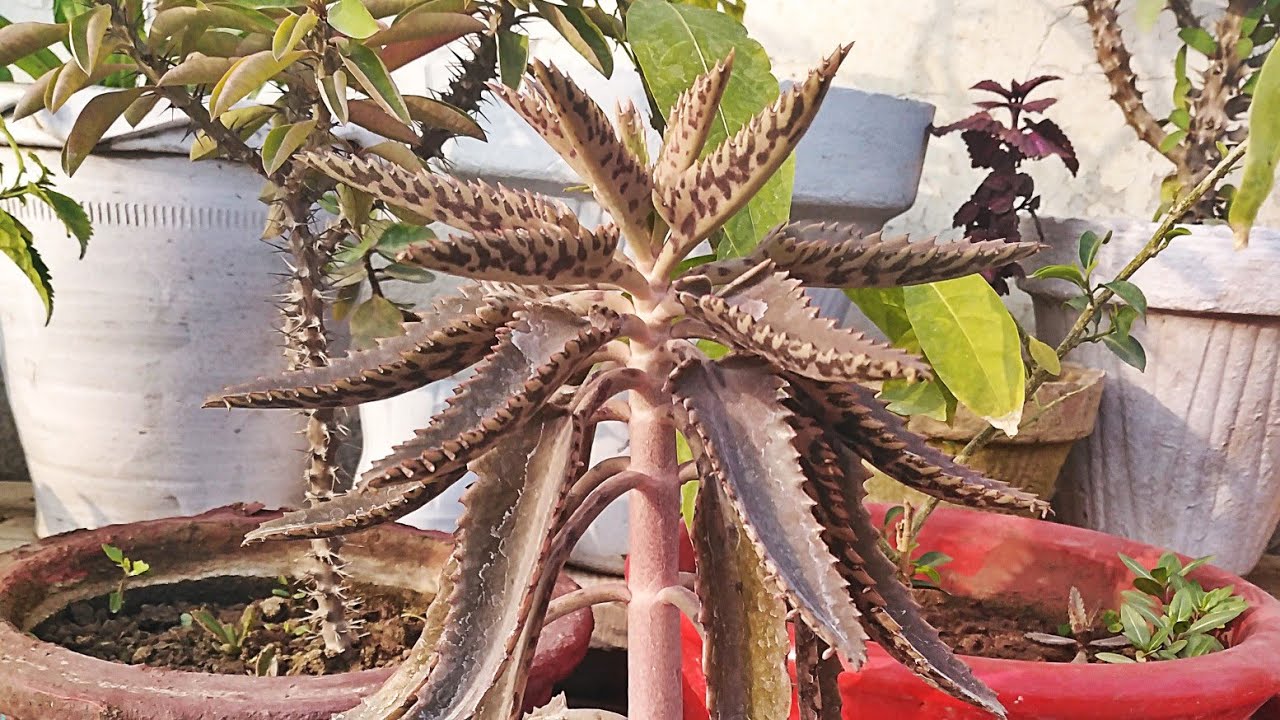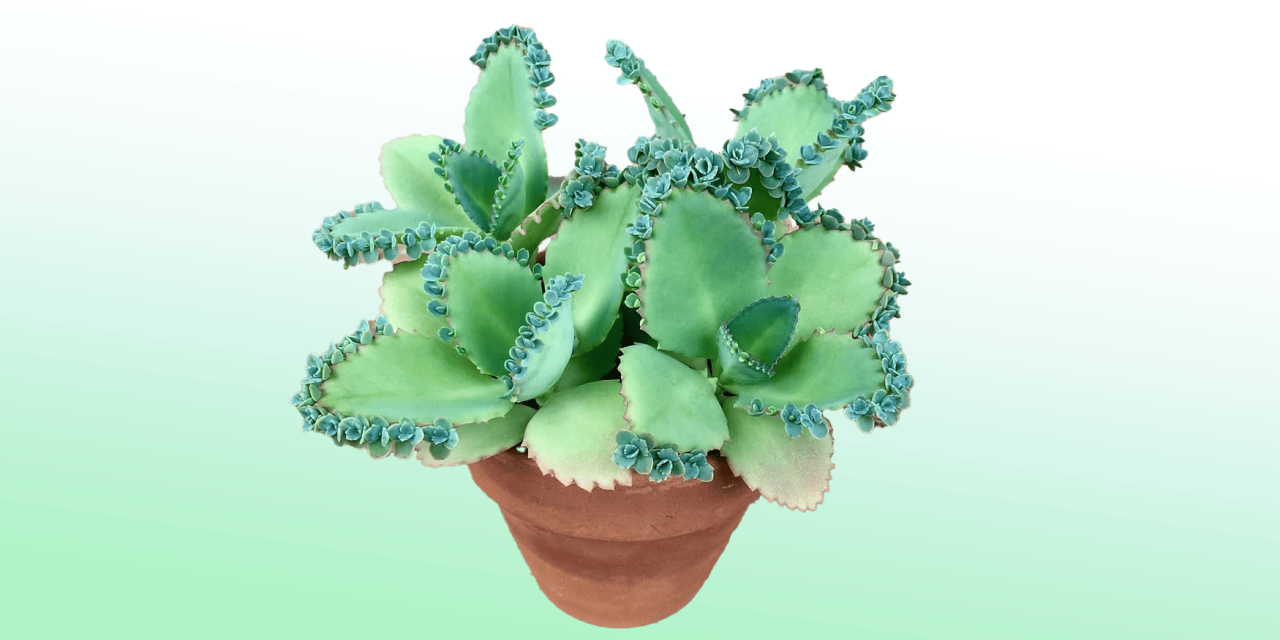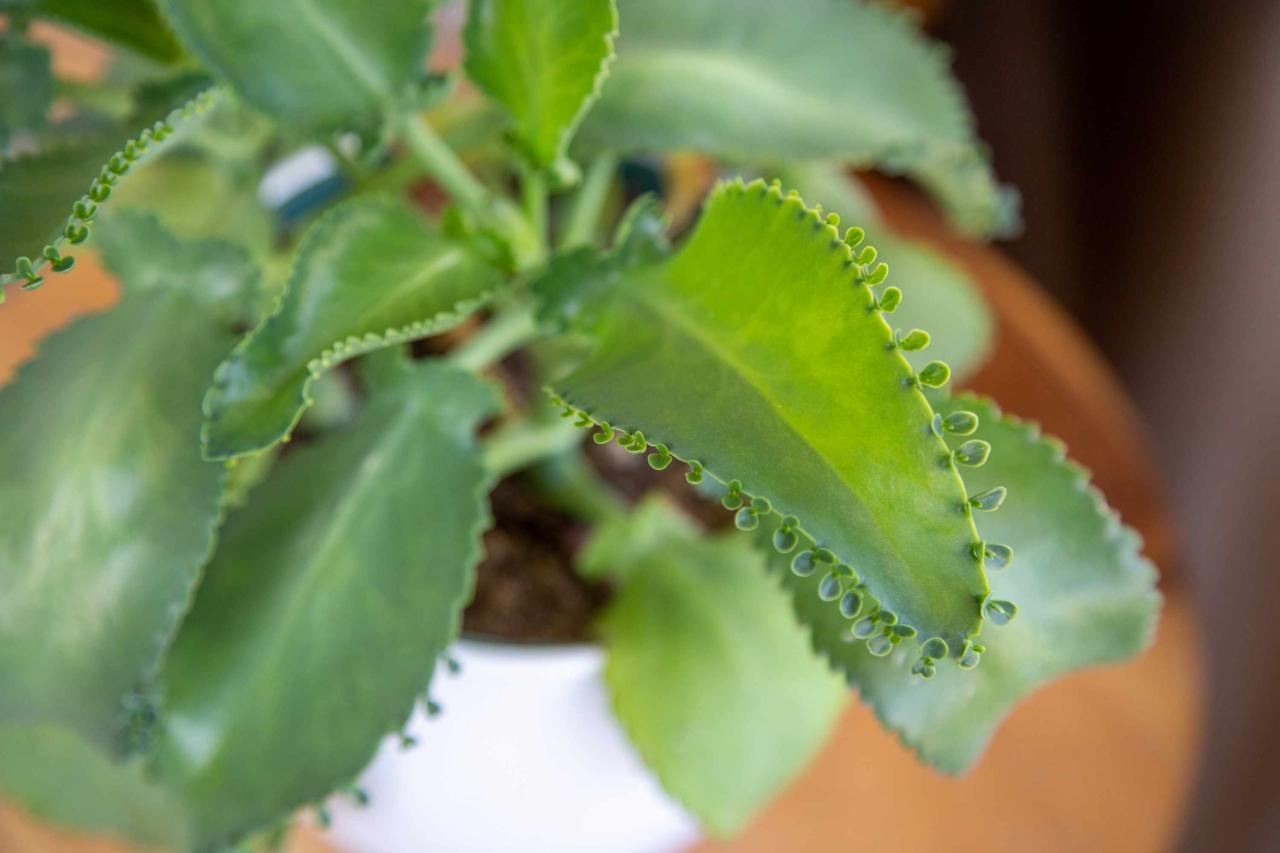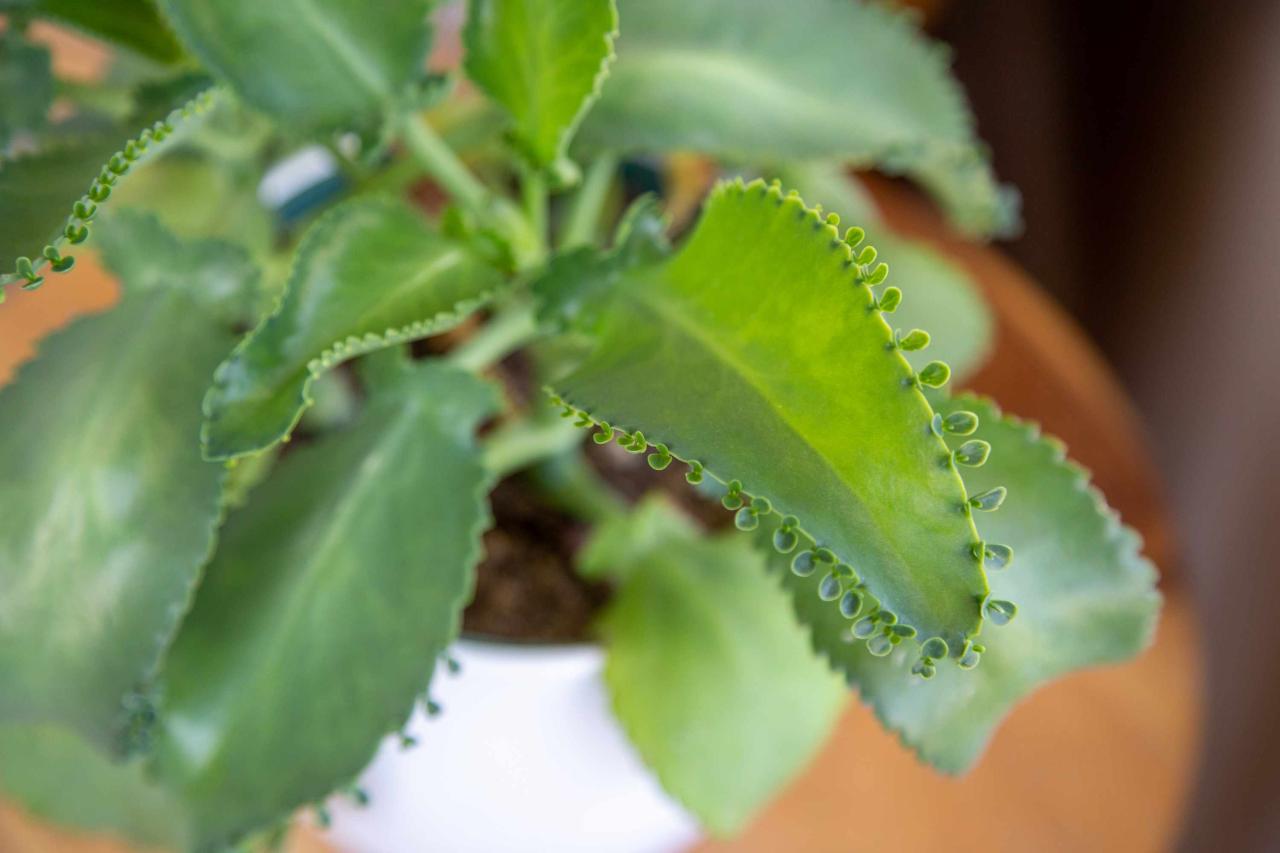The Complete Guide to Achieving Success with Mother of Thousands Plants takes you on a journey into the captivating world of these unique and resilient succulents. Prepare to be amazed by their diverse forms, learn the secrets to nurturing them, and discover how to effortlessly propagate these prolific plants.
Whether you’re a seasoned plant enthusiast or just starting out, this guide will empower you to cultivate thriving Mother of Thousands plants that will transform your home and garden.
From understanding their unique characteristics and origins to mastering propagation techniques and troubleshooting common problems, this comprehensive guide covers everything you need to know about Mother of Thousands plants. We’ll explore the fascinating history and cultural significance of these plants, delve into the optimal growing conditions, and provide step-by-step instructions for successful propagation.
You’ll also discover creative ways to incorporate Mother of Thousands plants into your home decor and landscaping, along with tips for managing potential challenges.
Introduction to Mother of Thousands Plants

The Mother of Thousands plant, also known asKalanchoe daigremontiana*, is a captivating succulent with an intriguing history and fascinating characteristics. This unique plant, native to Madagascar, has earned its name for its prolific propagation method, producing numerous plantlets along the edges of its leaves.
Characteristics and Origins of Mother of Thousands Plants
Mother of Thousands plants are known for their striking appearance and unique reproductive capabilities. These succulents typically grow upright with fleshy, triangular leaves that are patterned with dark brown spots. The plant’s most remarkable feature is its ability to produce hundreds of tiny plantlets along the edges of its leaves.
These plantlets, known as “bulbils,” are genetically identical clones of the parent plant, ensuring quick and easy propagation. The plant’s origin can be traced back to the arid regions of Madagascar, where it thrives in the harsh conditions of rocky slopes and dry environments.
Its ability to store water in its fleshy leaves allows it to survive in these challenging conditions, making it a resilient and adaptable species.
Types of Mother of Thousands Plants
WhileKalanchoe daigremontiana* is the most commonly known Mother of Thousands plant, there are other species within the
-Kalanchoe* genus that share similar characteristics. Some notable variations include
- Kalanchoe thyrsiflora:This species, also known as the “Paddle Plant,” produces plantlets on the edges of its elongated, paddle-shaped leaves.
- Kalanchoe tomentosa:This plant, often referred to as the “Panda Plant,” features fuzzy, silvery-green leaves with brown spots that resemble panda fur.
- Kalanchoe delagoensis:This species, also known as the “Chandelier Plant,” produces plantlets on long, trailing stems, giving it a cascading appearance.
History and Cultural Significance of Mother of Thousands Plants
Mother of Thousands plants have a rich history and cultural significance. They have been used for medicinal purposes in traditional medicine systems, particularly in Madagascar, where the plant is native.
“The plant’s leaves are believed to have anti-inflammatory, analgesic, and anti-bacterial properties, making it a popular remedy for various ailments.”
In addition to its medicinal uses, the Mother of Thousands plant has also been cultivated as an ornamental plant for its unique appearance and ease of propagation. Its ability to produce numerous plantlets has made it a popular choice for gardeners seeking a low-maintenance and visually appealing addition to their collections.
Understanding Mother of Thousands Plant Care
Providing the right care for your Mother of Thousands plant is essential for its healthy growth and vibrant appearance. This section will explore the optimal growing conditions, including soil type, light requirements, watering techniques, fertilization methods, and pruning practices.
Soil Type
The ideal soil for Mother of Thousands plants is a well-draining mix that allows for adequate aeration. A combination of potting soil, perlite, and vermiculite creates an optimal balance. This blend ensures proper drainage, preventing root rot, while also providing essential nutrients.
Light Requirements
Mother of Thousands plants thrive in bright, indirect light. They can tolerate some direct sunlight, but prolonged exposure can scorch their leaves. Placing them near a window that receives morning or evening sun is ideal.
Watering Techniques
Watering frequency depends on the season and environmental conditions. During the growing season (spring and summer), allow the top inch of soil to dry out before watering thoroughly. In winter, reduce watering as the plant’s growth slows down. Overwatering can lead to root rot, so it is crucial to ensure proper drainage.
The Complete Guide to Achieving Success with Mother of Thousands Plants delves into the fascinating world of these unique succulents, offering expert advice on care, propagation, and even pest control. For those seeking to expand their collection, the guide also provides detailed instructions on starting new plants from cuttings.
If you’re interested in exploring similar propagation techniques for other carnivorous plants, be sure to check out Turn One Venus Fly Trap Into Many! Propagation Guide for Beginners. This comprehensive guide will equip you with the knowledge and skills to successfully cultivate a thriving Venus flytrap colony.
Whether you’re a seasoned plant enthusiast or a curious beginner, both guides offer valuable insights into the captivating world of plant propagation.
Fertilizing
Mother of Thousands plants benefit from regular fertilization during the growing season. A balanced liquid fertilizer diluted to half strength can be applied every two to four weeks. Avoid over-fertilizing, as it can damage the plant.
Pruning
Pruning is essential for maintaining the shape and health of your Mother of Thousands plant. Regular pruning encourages bushier growth and prevents the plant from becoming leggy. Pinch off any dead or yellowing leaves and remove any stems that are growing too long.
Our “Complete Guide to Achieving Success with Mother of Thousands Plants” offers expert tips on nurturing these unique succulents. While Mother of Thousands propagate easily through plantlets, you might be interested in the similar process of dividing Venus Fly Traps, as described in our comprehensive guide, How to Propagate Venus Fly Traps Using Division: Complete Guide.
Back to Mother of Thousands, remember to provide well-draining soil and bright, indirect light for optimal growth.
Propagation Techniques for Mother of Thousands Plants
Propagating Mother of Thousands plants is a simple and rewarding process, allowing you to easily expand your collection or share these fascinating plants with others. There are three primary methods for propagating these plants: leaf cuttings, stem cuttings, and plantlets.
Leaf Cuttings
Leaf cuttings are the most common and effective method for propagating Mother of Thousands. The leaves of these plants naturally produce plantlets along their edges, making them ideal for propagation.
- Select Healthy Leaves:Choose healthy, mature leaves from your Mother of Thousands plant, ensuring they are free from disease or damage.
- Prepare the Leaf:Carefully detach the leaf from the plant, leaving a small portion of the stem attached. This stem portion will aid in root development.
- Planting the Leaf:Place the leaf cutting on a well-draining potting mix, ensuring the stem portion is partially buried. You can also use a propagation tray filled with perlite or vermiculite for this step.
- Moisture and Light:Keep the soil or propagation medium consistently moist, but not waterlogged. Place the leaf cutting in a bright, indirect light location.
- Root Development:Within a few weeks, you should observe the development of roots and plantlets along the edges of the leaf. Once the plantlets have grown a few inches, you can carefully separate them from the parent leaf and plant them individually in small pots.
Stem Cuttings
Stem cuttings are another effective method for propagating Mother of Thousands. This method involves taking a section of the stem containing several leaves and nodes.
- Select a Stem:Choose a healthy stem from your Mother of Thousands plant, ensuring it has several nodes (the points where leaves grow).
- Cut the Stem:Use a sharp knife or pruning shears to cut a section of the stem, approximately 4-6 inches long.
- Remove Lower Leaves:Remove the leaves from the bottom 1-2 inches of the stem to encourage root development.
- Planting the Cutting:Dip the cut end of the stem in rooting hormone (optional) and plant it in a well-draining potting mix, ensuring the nodes are partially buried. You can also use a propagation tray filled with perlite or vermiculite for this step.
- Moisture and Light:Keep the soil or propagation medium consistently moist, but not waterlogged. Place the stem cutting in a bright, indirect light location.
- Root Development:Within a few weeks, you should observe the development of roots from the nodes of the stem. Once the roots are established, you can transplant the new plant into a larger pot.
Plantlets
Mother of Thousands plants naturally produce plantlets along the edges of their leaves and stems. These plantlets are miniature versions of the parent plant and can be easily separated and grown into new plants.
- Identify Plantlets:Look for small, independent plantlets with their own roots emerging from the parent plant.
- Gently Separate:Carefully detach the plantlets from the parent plant, ensuring you do not damage the roots.
- Plant the Plantlets:Plant the separated plantlets in individual pots filled with well-draining potting mix. Ensure the roots are covered with soil.
- Water and Light:Keep the soil consistently moist, but not waterlogged. Place the new plants in a bright, indirect light location.
Troubleshooting Common Mother of Thousands Plant Problems

Mother of Thousands plants are generally hardy and resilient, but they can be susceptible to certain issues that can affect their health and appearance. Understanding the common problems that can arise and how to address them can help you maintain a thriving Mother of Thousands plant.
Pests
Pests are a common issue for Mother of Thousands plants. These small creatures can cause damage to the plant’s leaves and stems, leading to a decline in its health and appearance.
- Mealybugs:These small, white, cottony insects feed on plant sap, causing yellowing and wilting of leaves. They can be identified by their white, fluffy appearance and their tendency to cluster together.
- Aphids:These tiny, pear-shaped insects also feed on plant sap, causing leaf curling, discoloration, and stunted growth.
They can be identified by their small size, their green, brown, or black color, and their tendency to congregate on the undersides of leaves.
- Spider mites:These tiny, red or yellow mites are difficult to see with the naked eye. They feed on plant sap, causing yellowing and stippling of leaves.
They can also create fine webs on the undersides of leaves.
To address pest problems, you can use a variety of methods. You can try hand-picking the pests off the plant, spraying them with a strong jet of water, or using insecticidal soap. If the infestation is severe, you may need to use a systemic insecticide.
Diseases
While Mother of Thousands plants are generally resistant to diseases, they can be susceptible to certain fungal infections.
- Root Rot:This fungal disease occurs when the soil is too wet and poorly drained, causing the roots to rot and decay. This can lead to yellowing, wilting, and eventually death of the plant.
- Leaf Spot:This fungal disease can cause brown or black spots on the leaves, which can eventually lead to leaf drop.
It is often caused by high humidity and poor air circulation.
To prevent fungal diseases, it’s important to provide good drainage and avoid overwatering. You can also treat fungal infections with fungicide.
Environmental Stress, The Complete Guide to Achieving Success with Mother of Thousands Plants
Environmental stress can also contribute to problems with Mother of Thousands plants.
- Overwatering:Mother of Thousands plants are succulent and prefer well-draining soil. Overwatering can lead to root rot and other problems.
- Underwatering:While Mother of Thousands plants are drought-tolerant, they still need regular watering to thrive. Underwatering can lead to wilting, leaf drop, and stunted growth.
- Low Humidity:Mother of Thousands plants prefer moderate humidity levels. Low humidity can cause the leaves to dry out and become brittle.
- Lack of Sunlight:Mother of Thousands plants need bright, indirect sunlight to thrive. Lack of sunlight can lead to stunted growth and pale, yellow leaves.
To prevent environmental stress, it’s important to provide your Mother of Thousands plant with the right amount of water, humidity, and sunlight.
Mother of Thousands Plants in Home Decor and Landscaping: The Complete Guide To Achieving Success With Mother Of Thousands Plants
The Mother of Thousands plant, with its unique appearance and prolific propagation, can add a touch of whimsy and greenery to your home and garden. Its vibrant foliage and abundance of plantlets create a captivating visual display. Whether you prefer a cascading effect from a hanging basket or a ground cover in your outdoor space, Mother of Thousands offers versatility and visual appeal.
Incorporating Mother of Thousands Plants into Home Decor and Landscaping
The Mother of Thousands plant’s adaptability and visual appeal make it a versatile choice for both indoor and outdoor settings. The table below explores different applications and offers tips for success.
Application |
Description |
Image Description |
Tips |
|---|---|---|---|
Hanging Baskets |
The cascading nature of the Mother of Thousands plant makes it ideal for hanging baskets. The plantlets dangling from the edges create a whimsical and eye-catching display. |
A hanging basket filled with Mother of Thousands plants, showcasing the cascading effect of the plantlets. The basket is made of woven material and has a rustic appearance. The plantlets are a vibrant green, contrasting with the brown basket. |
Choose a well-draining potting mix and ensure adequate sunlight. Regularly prune the plant to maintain its shape and prevent overcrowding. |
Terrariums |
The compact size and slow growth of the Mother of Thousands plant make it suitable for terrariums. Its unique foliage and plantlets create a miniature landscape within the enclosed environment. |
A glass terrarium containing a variety of plants, including a Mother of Thousands plant. The terrarium is filled with pebbles and moss, creating a miniature garden setting. The Mother of Thousands plant is in the foreground, with its plantlets visible. |
Select a terrarium with adequate ventilation and maintain humidity levels. Monitor the plant’s growth and prune as needed to prevent overcrowding. |
Ground Cover |
The Mother of Thousands plant can be used as a ground cover, creating a dense carpet of greenery. Its ability to spread quickly makes it an effective way to cover bare patches of soil. |
A garden bed with a Mother of Thousands plant as a ground cover. The plant is spreading across the soil, creating a dense carpet of green foliage. The plantlets are visible among the mature leaves. |
Ensure the soil is well-draining and the area receives adequate sunlight. Regularly prune the plant to control its spread and maintain a desired appearance. |
Container Gardens |
Mother of Thousands plants can be grown in containers of various sizes, adding visual interest and texture to your outdoor space. They can be combined with other plants to create a diverse and vibrant display. |
A container garden with a variety of plants, including a Mother of Thousands plant. The container is a terracotta pot, and the plants are arranged in a visually appealing manner. The Mother of Thousands plant is in the center, with its plantlets visible. |
Choose a container with drainage holes and use a well-draining potting mix. Provide adequate sunlight and water regularly. |
The Benefits and Challenges of Mother of Thousands Plants
Mother of Thousands plants, with their unique and captivating appearance, offer numerous benefits for home gardeners. However, their propagation methods and potential for invasiveness necessitate careful consideration. This section will explore the advantages and disadvantages of cultivating these plants, providing insights into their care and management.
The Advantages of Mother of Thousands Plants
The appeal of Mother of Thousands plants stems from their distinctive features and low-maintenance requirements. These plants offer a variety of advantages:
- Aesthetic Appeal:Their vibrant green foliage and unusual plantlets, which resemble tiny offspring, contribute to their aesthetic appeal. These plants can add a touch of whimsy and vibrancy to any indoor or outdoor space.
- Ease of Care:Mother of Thousands plants are relatively easy to maintain, thriving in various conditions and requiring minimal attention. They are known for their drought tolerance and adaptability to different light levels, making them suitable for both novice and experienced gardeners.
- Air Purification:Like many other plants, Mother of Thousands contribute to air purification by absorbing carbon dioxide and releasing oxygen. They can help improve indoor air quality, creating a healthier and more refreshing environment.
The Challenges of Mother of Thousands Plants
While Mother of Thousands plants offer numerous benefits, their propagation methods and potential for invasiveness present some challenges:
- Invasive Nature:Mother of Thousands plants can become invasive due to their prolific propagation methods. The plantlets readily detach from the parent plant and take root, potentially spreading uncontrollably. This can be a concern in outdoor settings, where they may crowd out other plants or become a nuisance.
- Toxicity to Pets:The sap of Mother of Thousands plants can be toxic to pets, causing irritation and discomfort if ingested. It is crucial to keep these plants out of reach of animals, especially cats and dogs, who may be tempted to nibble on their foliage.
Managing the Challenges
To mitigate the challenges associated with Mother of Thousands plants, it is essential to implement appropriate management strategies:
- Controlled Propagation:To prevent uncontrolled spreading, regularly remove plantlets from the parent plant. This can be done by gently detaching them or trimming them off. It is advisable to dispose of them responsibly, as they can readily take root if discarded in the garden.
- Container Gardening:Growing Mother of Thousands plants in containers is a good way to control their spread. This allows you to confine their growth and prevent them from becoming invasive in your garden. Choose pots with drainage holes to ensure proper aeration and water flow.
- Pet Safety:Keep Mother of Thousands plants out of reach of pets to prevent accidental ingestion. If you have pets, consider growing these plants in a location inaccessible to them, such as a hanging basket or a high shelf.
Ending Remarks

By embracing the knowledge and techniques shared in this guide, you’ll unlock the potential of Mother of Thousands plants and transform your space into a lush and vibrant oasis. From their easy care and stunning aesthetics to their air-purifying properties, these plants offer a multitude of benefits.
So, embark on this journey with confidence and discover the joy of cultivating thriving Mother of Thousands plants that will bring a touch of nature’s beauty to your life.
Popular Questions
What is the best way to water Mother of Thousands plants?
Mother of Thousands plants prefer a well-draining soil and should be watered thoroughly but only when the soil is completely dry. Avoid overwatering, as this can lead to root rot.
Are Mother of Thousands plants poisonous to pets?
Yes, Mother of Thousands plants are considered mildly toxic to pets. If ingested, they can cause mild gastrointestinal upset. It’s best to keep them out of reach of pets.
How often should I fertilize Mother of Thousands plants?
Fertilize Mother of Thousands plants during the growing season (spring and summer) with a balanced liquid fertilizer diluted to half strength. Avoid fertilizing during the winter months.

